Conflict Zones
After minerals deal, Trump approves arms to Ukraine, plays down peace plan | Russia-Ukraine war News
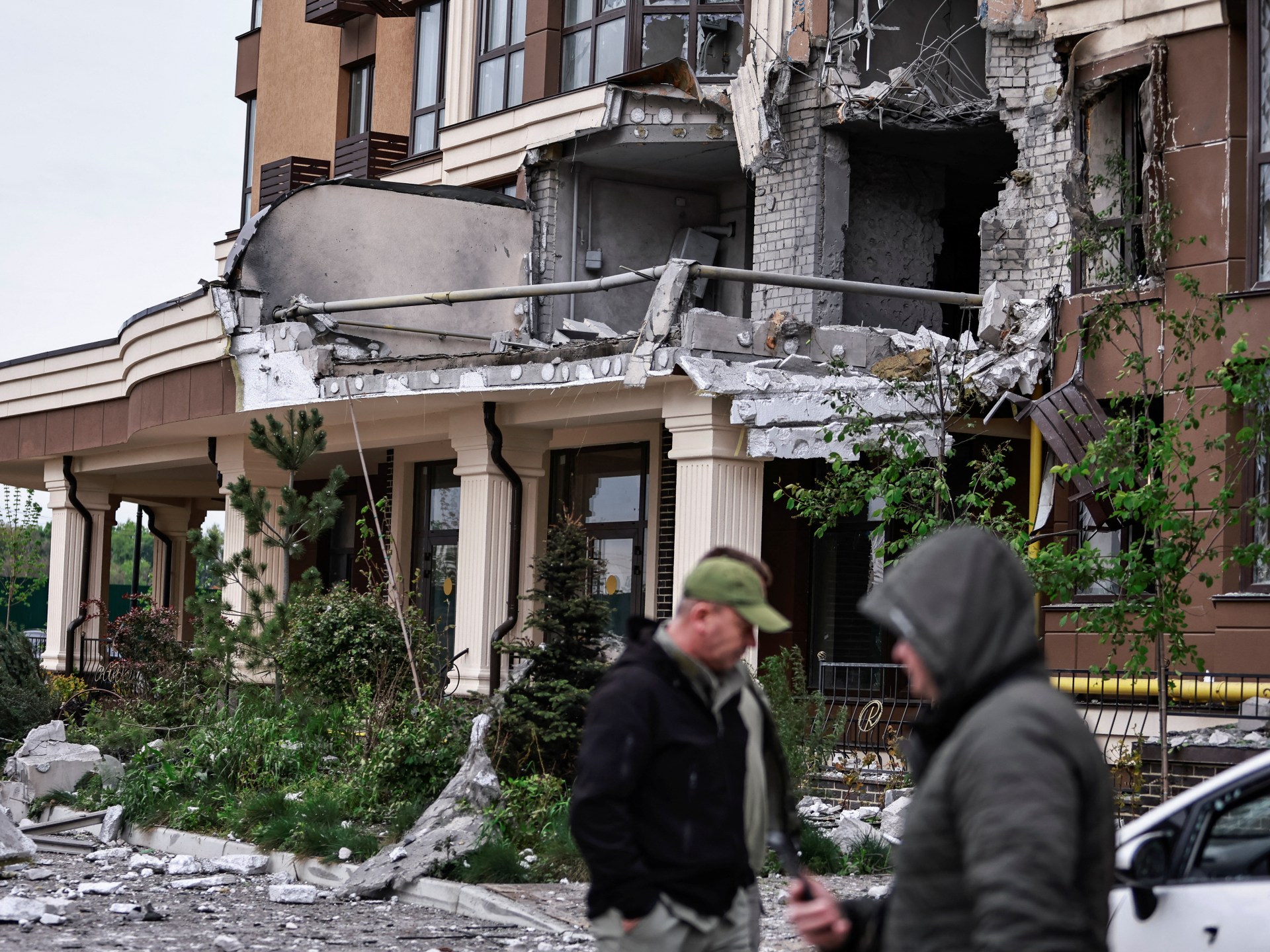
The Donald Trump administration last week approved its first sale of weapons to Ukraine after signing a memorandum of intent to exploit Ukrainian mineral wealth, suggesting that US foreign and defence policy under its current president will be driven by economic policy.
The US Defense Security Cooperation Agency (DSCA) announced on May 2 that the Trump administration had approved the sale of parts, maintenance and training for F-16 fighter jets to Ukraine worth $310m.
Defence newspaper The War Zone had previously said decommissioned F-16s were being shipped from a US Air Force graveyard in Arizona to Ukraine for spare parts, and published photos of partially dismantled F-16 fuselages being loaded onto a Ukrainian Antonov-124 transport plane at Tucson International Airport on May 1.
The US sale announcement did not include operational F-16 aircraft or missiles, but European allies of Ukraine have reportedly promised a total of 85 working F-16s.
This sale represented the first military aid from the Trump administration to Ukraine, and the first aid Ukraine would be paying for.
The previous administration of President Joe Biden provided $130bn in financial and military grants to Ukraine.

Ukrainian President Volodymyr Zelenskyy first publicly offered to buy US weapons systems on April 15, specifically asking for Patriot air defence systems.
The US sale followed the April 30 signing of a memorandum by US Treasury Secretary Scott Bessent and Ukrainian First Deputy Prime Minister Yulia Svyrydenko to jointly exploit new mineral deposits in Ukraine, including metals, oil and gas.
“This agreement signals clearly to Russia that the Trump administration is committed to a peace process centred on a free, sovereign and prosperous Ukraine over the long term,” said Bessent.
The memorandum said half of the proceeds from royalties and licensing fees payable to the government of Ukraine will be put into an investment fund for reconstruction purposes. It did not stipulate whether US investors would similarly invest any proportion of their proceeds, or if the US government would facilitate investment. Nor did the memorandum specify a timeframe for investment.
Svyrydenko said the US government would contribute to the reconstruction fund, without specifying how much.
Zelenskyy called it “now truly an equal partnership” in his Mayday evening address and said it would allow the US and Ukraine “to make money in partnership”.
“This partnership sends a strong message to Russia – the United States has skin in the game and is committed to Ukraine’s long-term success,” said a White House statement.
Trump steps back from peace deal
A day after signing the minerals deal, the Trump administration began to distance itself from the prospect of peace in Ukraine, despite Trump’s promise to deliver it quickly after his inauguration.
The administration delivered a ceasefire offer to Russia and Ukraine on April 17, calling it “final”.
“It’s going to be up to them to come to an agreement and stop this brutal, brutal conflict,” US Vice President JD Vance told Fox News on May 1.
“We’re not going to fly around the world organising mediation meetings. Now it’s up to the two sides,” said State Department spokesperson Tammy Bruce.

US Secretary of State and Acting National Security Advisor Marco Rubio told Fox News on the same day, “We’ve got so many, I would argue even more important, issues going on around the world,” referencing “what’s happening in China” and “Iran’s nuclear ambition”.
Whereas Ukraine has agreed to a US 30-day ceasefire proposal, Russia has not, proposing instead a three-day ceasefire to protect 29 international leaders attending a May 9 victory parade in Moscow to mark the end of the Second World War.
Zelenskyy has dismissed that request. On May 9, he called on Putin again to “a 30-day silence. But it must be real. No missile or drone strikes, no hundreds of assaults on the front… The Russians… must prove their willingness to end the war.”
Russian Foreign Ministry spokesperson Maria Zakharova responded by saying Zelenskyy “unambiguously threatened world leaders”.
Kremlin spokesman Dmitry Peskov told reporters the point of the three-day truce was “to test Kyiv’s readiness to find ways for a long-term sustainable peace”.
Russian Foreign Minister Sergey Lavrov told Brazil’s O Globo newspaper, “The ball is not in our court. [Kyiv] has not shown readiness for negotiations so far.”
Is Russia serious about peace?
Russia has prosecuted its war against Ukraine to the fullest, launching 1,300 assaults since the beginning of May.
Russia suffered 35,000 casualties in April, and just less than 126,000 in the first four months of 2025, said Ukraine’s Ministry of Defence – the equivalent of three rifle divisions. During that time, Russia occupied 1,627 sq km (628 square miles), a figure that included the recapture of its own Kursk region in March, according to the Institute for the Study of War (ISW).
Al Jazeera is unable to independently verify casualty tolls.
However, the ISW said Russian gains had “slowed as Russian forces come up against more well-defended Ukrainian positions in and around larger towns such as Kupiansk, Chasiv Yar, Toretsk, and Pokrovsk over the last four months”.
Ukrainian commander-in-chief Oleksandr Syrskii said the main threats were in “primarily Sumy and Kursk, Pokrovsky, Novopavlovsk”.
Russia has been intensifying its use of controlled air bombs (CABs) this year, said Ukraine’s Joint Forces Task Force, dropping 5,000 in April versus 4,800 in March, 3,370 in February and 1,830 in January.
Ukraine considers these 1.5-tonne bombs one of its biggest difficulties on the front lines. Neutralising Russia’s ability to launch them from planes deep inside Russia was its main reason for requesting long-range strike capability from the former administration of President Joe Biden.

Russia also stepped up long-range strikes against Ukraine’s cities.
Overnight on May 1, Russia fired five Iskander ballistic missiles and 170 drones and decoys. Two more Iskanders and 183 drones were launched on May 2. The northern city of Kharkiv, just 30km (19 miles) from the Russian border, was particularly hard-hit, with 10 fires recorded in various districts of the city, said the State Emergency Service. Some 44 people were injured. Russia struck Kharkiv again days later, engulfing its commercial market in flames.
Russia launched 165 drones on May 3 and 116 drones along with 2 Iskander missiles the following day. On Wednesday, a ballistic missile and drones struck Kyiv, killing a mother and son.
“The Russians are asking for silence on May 9, but they themselves strike Ukraine every day,” wrote Zelenskyy on Telegram.
The ISW said “the Kremlin is attempting to prolong negotiations to extract additional concessions from the United States and Ukraine.”
Ukraine strikes back
Ukraine held its front line against an escalating Russian onslaught and struck targeted blows against Russia’s military machine.
Ukraine’s head of military intelligence, Kyrylo Budanov, told The War Zone that Ukrainian Magura-7 unmanned surface drones had successfully downed two Russian Sukhoi-30 fighter jets using AIM-9 Sidewinder missiles originally designed for air-to-air use.
The pilot of the first Russian Su-30 was rescued by a civilian ship near the port of Novorossiysk in the Black Sea. The second Su-30 fell over Crimea. The crew did not survive, said Budanov.
The downing of a Sukhoi by a surface drone was unprecedented, he added.
Ukrainian military intelligence pioneered the use of surface kamikaze drones to strike Russian Black Sea Fleet ships, and on December 31 used them to launch rockets, downing two Russian helicopters.
It was the first time surface drones had been used against air targets – another Ukrainian innovation.
Since late 2022, Ukraine has also pioneered the use of light, first-person-view drones to perform targeted munitions drops on enemy armour and personnel.
“Over the past two months – March and April – our drones have hit and destroyed over 160 thousand enemy targets,” wrote Syrskii on Telegram.

In April, drones destroyed more than 83,000 targets, 8 percent more than in March, he claimed, lauding the “effectiveness of Ukrainian unmanned systems”.
In addition, he said deep-strike weapons had hit 62 targets on Russian territory in April.
In the past week, Ukrainian drones torched the Fiber Optic Systems plant in Saransk, Republic of Mordovia, for the second time in a month, Russia’s only plant manufacturing fibre-optic cable used in unmanned aerial vehicles. They seemed to have also struck the nearby Saranskkabel machine-building plant.
Ukraine also struck the Instrument-Making Design Bureau in Tula, which produces antitank systems and small arms, as well as the Scientific-Production Association (SPLAV), which produces multiple-launch rocket systems.
Further, Ukraine claimed to have struck airbases in the Moscow and Kaluga regions, housing cruise missiles, Tupolev-22M3 strategic bombers and Su-27 and MiG-29 fighter jets.
“You are writing the history of the modern Ukrainian statehood,” Syrskii wrote on Telegram on Tuesday. “You are the modern history of Ukraine.”

Conflict Zones
Israel intercepts missile launched by Yemen’s Houthis | Houthis News
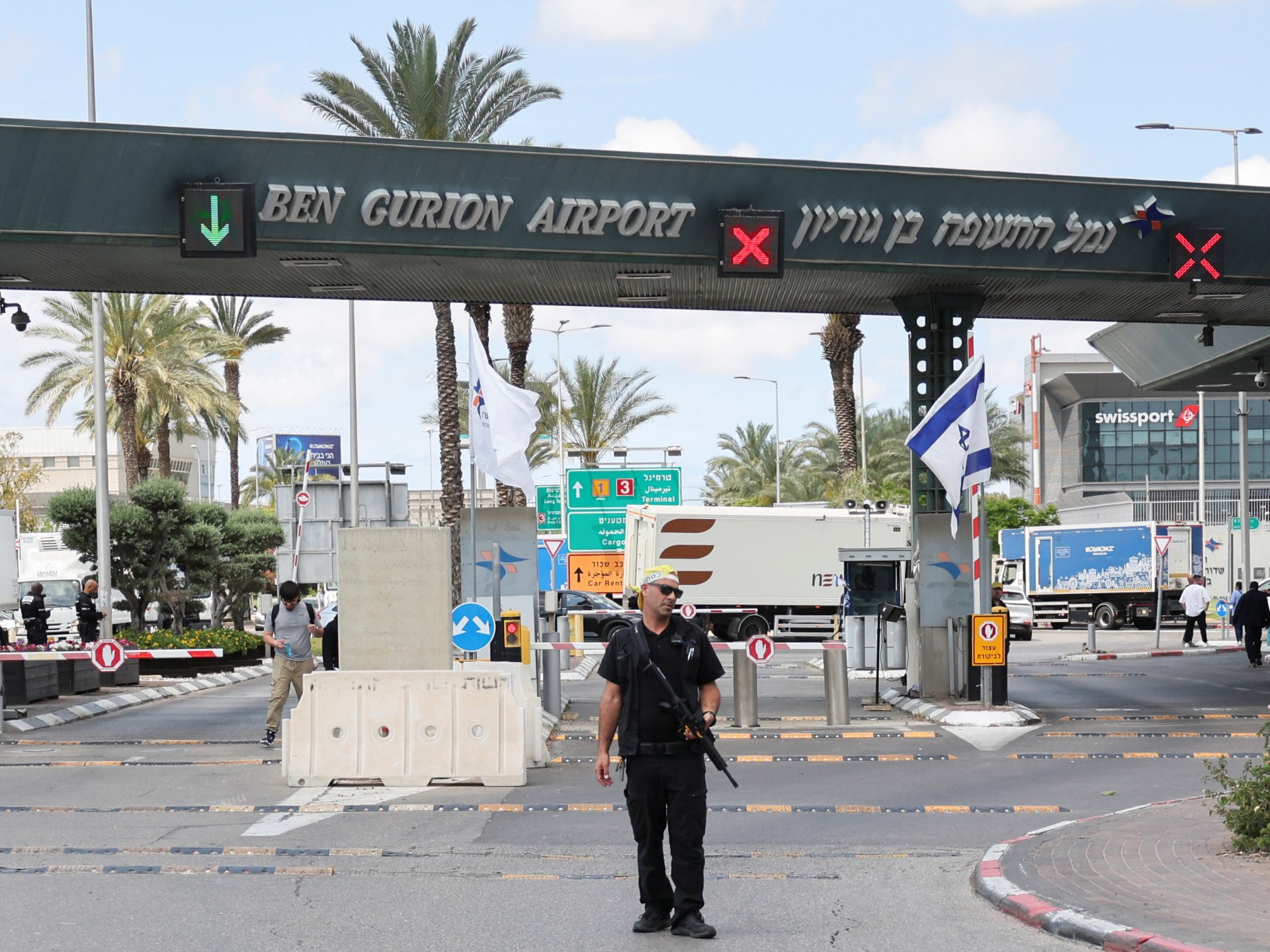
The incident comes days after Oman said it mediated a ceasefire deal between the US and the Houthi group.
Air raid sirens were heard in Israel as a missile was launched towards the territory by Yemen’s Houthis, who say they are retaliating against Israeli sites in solidarity with Palestinians in Gaza.
Israel’s military said it intercepted the projectile on Friday using its air defence systems.
The incident came days after Oman said it mediated a ceasefire deal between the United States and the Houthis, with the Yemeni group saying the agreement did not include Israel.
Houthi rebels fired a “hypersonic ballistic missile” towards Ben Gurion airport near Tel Aviv, while also claiming a drone attack “targeting a vital Israeli enemy target” in the same area, according to the group’s military spokesperson, Yahya Saree.
Israeli media reported that air raid sirens were sounded in several areas across central Israel, with people receiving early warning mobile messages about the missile attack.
Israeli Defence Minister Israel Katz said that Israel would respond forcefully in Yemen and “wherever necessary”, describing the Houthi missiles as “Iranian”.
There were no reports of injuries or damage from the missile attack, according to a military statement.
US President Donald Trump announced on Tuesday that his country would stop bombing Yemen as the Houthis had agreed to stop their attacks on US ships in the Red Sea.
But the Houthis have continued to fire missiles and drones towards Israel, most of which the Israeli military says it has intercepted, without casualties or serious damage occurring.
The Houthis have attacked numerous vessels in the Red Sea linked to Israel and its allies in what they state is an act of solidarity with Palestine.
According to Israeli media, the Houthi group has launched 28 ballistic missiles and dozens of drones at Israel since March 18, when Israel resumed its genocidal war on Gaza.
Israel has been waging a devastating war on the enclave since October 2023, killing more than 50,000 Palestinians, after a Hamas-led attack into southern Israel that month.
Conflict Zones
Who are the armed groups India accuses Pakistan of backing? | Armed Groups News
Tensions are higher between India and Pakistan than they have been in decades as the two countries trade blame for drone attacks on each other’s territory over the past few days. At the heart of the dispute is what India claims is Pakistan’s support for armed separatist groups operating in Kashmir, a region disputed between the two countries.
An armed group called The Resistance Front (TRF) claimed responsibility for the Pahalgam attack in Indian-administered Kashmir last month in which 26 people were killed. India alleges that TRF is an offshoot of another Pakistan-based armed group, Lashkar-e-Taiba (LeT) and has blamed Pakistan for supporting such groups.
Pakistan has denied this. It condemned the attack in April and called for an independent investigation.
Here is more about who the armed groups are and the major attacks they’ve claimed or been blamed for.
The TRF emerged in 2019 following the Indian government’s suspension of Article 370 of the Indian Constitution, stripping Indian-administered Kashmir of its semi-autonomous status.
However, the group was not widely known before the Pahalgam attack, which it took responsibility for in April via the Telegram messaging app, on which it said it was opposed to the granting of residency permits to “outsiders”.
Since the repeal of Article 370, non-Kashmiris have been granted residency permits to settle in Indian-administered Kashmir. This has stoked fears that the Indian government is trying to change the demographics of Kashmir, whose population is nearly all Muslim.
Unlike other armed rebel groups in Kashmir, the TRF does not have an Islamic name.
However, the Indian government maintains that it is an offshoot of, or a front for, Lashkar-e-Taiba (LeT), a Pakistan-based armed group whose name means “Army of the Pure”.
In 2020, TRF started claiming responsibility for minor attacks, including some targeted killings. TRF recruits included rebels from different splinter rebel groups. Indian security agents say they have arrested multiple TRF members since then.
According to Indian government records, most armed fighters killed in gunfights in Kashmir were affiliated with the TRF in 2022.
The LeT, which calls for the “liberation” of Indian-administered Kashmir, was founded around 1990 by Hafiz Muhammad Saeed, who is also known as Hafiz Saeed.
In 2008, armed gunmen opened fire on civilians at several sites in Mumbai, India, killing 166 people. Ajmal Kasab, the only attacker captured alive, said the attackers were members of LeT. Saeed denied any involvement in that attack, however. Kasab was executed by India in 2012.
India also blamed Pakistani intelligence agencies for the attack. While Pakistan conceded that the attack may have been partly planned on Pakistani soil, it maintained that its government and intelligence agencies were not involved.
According to the United Nations, LeT was also involved in a 2001 attack on India’s parliament and a 2006 attack on Mumbai commuter trains that killed 189 people.
On May 7, India launched missile attacks on several cities in Pakistan and Pakistan-administered Kashmir. One of these cities was Muridke in the Punjab province. India claims that Muridke was the location of the headquarters of the Jamat-ud-Dawa, a charity organisation that New Delhi insists is a front for the LeT.
Last week, the Indian army claimed it had struck LeT’s Markaz Taiba camp in Muridke. The army also claimed Kasab had been trained at this camp.
Pakistan says LeT has been banned, however. Following an attack on Indian-administered Kashmir’s Pulwama in 2019, Pakistan also reimposed a lapsed ban on Jamat-ud-Dawa. Saeed was arrested in 2019 and is in the custody of the Pakistani government, serving a 31-year prison sentence after being convicted in two “terror financing” cases.
Jaish-e-Muhammad (JeM), or “The Army of Muhammad”, was formed around 2000 by Masood Azhar, who had been released from Indian prison in 1999.
Azhar, who had been arrested on “terrorism” charges, was released in exchange for 155 hostages being held by hijackers of an Indian Airlines plane.
Azhar previously fought under the banner of a group called Harkat-ul-Mujahideen, which calls for Kashmir to be united with Pakistan, and has been linked to al-Qaeda.
According to the UN Security Council, JeM has also had links with al-Qaeda, Osama bin Laden and the Taliban.
Pakistan banned JeM in 2002 after the group, alongside LeT, was blamed for an attack on the Indian parliament in 2001.
The British-born Ahmed Omar Saeed Sheikh, who was convicted of killing US journalist Daniel Pearl in 2002, was also a member of JeM. Pearl was the Wall Street Journal’s South Asia bureau chief. However, a 2011 report released by the Pearl Project at Georgetown University following its own investigation claimed that Pearl had not been murdered by Sheikh. The report instead alleged that Khalid Sheikh Mohammed, the mastermind behind the September 11, 2001 attacks, was responsible. In 2021, a panel of three judges at Pakistan’s Supreme Court ordered Sheikh’s release.
Despite the ban, Indian authorities claim the group continues to operate in Bahawalpur, in Pakistan’s Punjab province. On May 7, the Indian army claimed its strikes had also targeted the headquarters of JeM there.
In 2019, JeM claimed a suicide bomb attack that killed 40 Indian paramilitary soldiers in Pulwama in Indian-administered Kashmir.
Azhar has been arrested by Pakistani authorities twice, but was released and has never been charged. He has since disappeared from the public eye and his current whereabouts are not known.
Hizbul-ul-Mujahideen
Hizbul-ul-Mujahideen (HuM), or “Party of Holy Fighters” was formed in 1989 by Kashmiri separatist leader Muhammad Ahsan Dar.
The group emerged out of the 1988 protests in Kashmir against the Indian government. The group, also called Hizb, has become the largest Indigenous rebel group based in Indian-administered Kashmir.
Rather than calling for independence, HuM calls for the whole of Kashmir to be allowed to accede to Pakistan.
The group has a huge network of fighters in Shopian, Kulgam and Pulwama districts in the south of Indian-administered Kashmir.
In 2016, the killing of popular HuM commander Burhan Wani triggered widespread protests in Indian-administered Kashmir, resulting in a crackdown by Indian security forces.
The following year, the US designated HuM as a “foreign terrorist organisation” and placed sanctions on the group.
HuM leader Riyaz Naikoo spoke to Al Jazeera in 2018. “It is the nature of the occupying Indian state that has compelled us to resort to violent methods of resistance,” he said.
When asked what the group’s demands were, Naikoo said: “Our demand is very simple – freedom. Freedom, for us, means the complete dismantling of India’s illegal occupation of Kashmir and all the structures that support it, be they military or economic.”
He added that the group considers Pakistan an “ideological and moral friend” because “Pakistan is the only country which has consistently supported our cause and raised the concerns of Kashmiri freedom struggle at international forums”.
Conflict Zones
‘Slippery slope’: How will Pakistan strike India as tensions soar? | India-Pakistan Tensions News
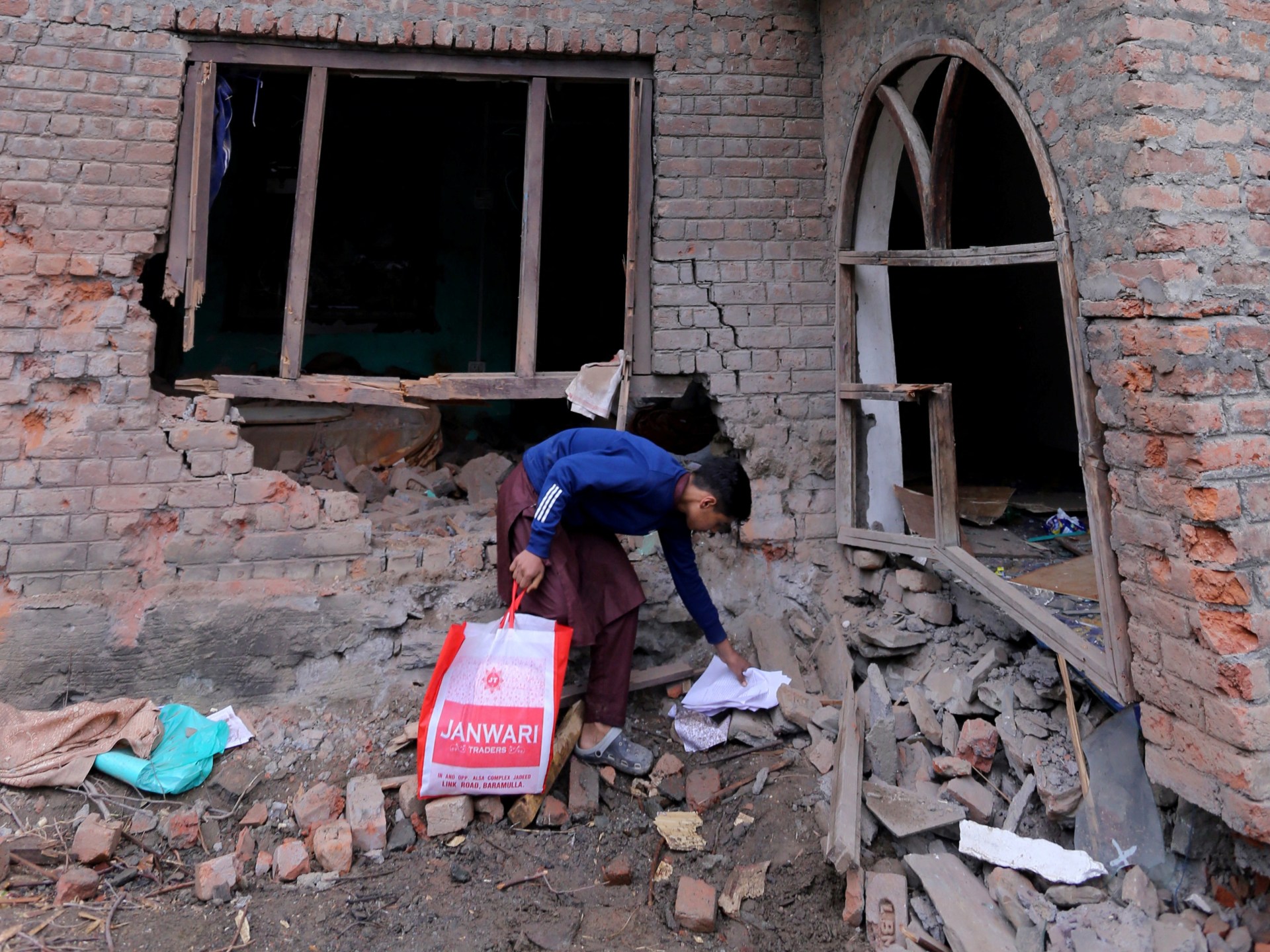
Islamabad, Pakistan – On Wednesday evening, as Pakistan grappled with the aftermath of a wave of missile strikes from India that hit at least six cities, killing 31 people, the country’s military spokesperson took to a microphone with a chilling warning.
“When Pakistan strikes India, it will come at a time and place of its own choosing,” Lieutenant General Ahmed Sharif Chaudhry said in a media briefing. “The whole world will come to know, and its reverberation will be heard everywhere.”
Two days later, India and Pakistan have moved even closer to the brink of war.
On Thursday, May 8, Pakistan accused India of flooding its airspace with kamikaze drones that were brought down over major cities, including Lahore and Karachi. India confirmed the drone assault, but said it was responding to a provocation from Pakistan — missiles and drones launched towards cities and air defence systems in India and Indian-administered Kashmir. Pakistan denied that charge, and subsequent accusations of missile and drone attacks on parts of Indian-administered Kashmir on Thursday night.
With Pakistan denying any missile or drone strikes against India, Chaudhry’s warning of upcoming retribution remains alive, hovering over the 1.6 billion people of South Asia, 17 days after armed gunmen killed 26 male civilians in Pahalgam, Indian-administered Kashmir, triggering the current escalation.
Experts say how Pakistan responds will likely be shaped by its desire to demonstrate that it can hurt India, without pushing the crisis over the edge into a full-blown conflict.
“We are still far away from a war, but we are much closer than we were 24 hours ago,” said Christopher Clary, assistant professor of political science at the University at Albany.

Next target: Military bases?
Clary said that the next “logical escalatory” step for both countries might be to target each other’s military bases.
“We have already seen this with air defence-focused strikes,” Clary told Al Jazeera, referring to the Indian drone attacks that tried to target Pakistani radar systems overnight on May 7-8, and New Delhi’s claims that Pakistan launched missiles and drones towards its military facilities.
“But I fear other strikes are likely in the next 24 hours. I think we are still several days from de-escalation,” Clary said, adding that more deaths are likely.
India and Pakistan have been at loggerheads since gaining independence from British colonial rule in August 1947, especially over the scenic Kashmir Valley in the northwestern subcontinent. Both control parts of it, with China in control of two thin slices. India claims all of Kashmir, while Pakistan claims all of Kashmir except the parts held by China, its ally.
They have fought multiple wars over Kashmir. The last major escalation occurred in February 2019, when India accused Pakistan of supporting armed groups responsible for a suicide bombing that killed 40 Indian soldiers in Pulwama, in Indian-administered Kashmir.
In response, India crossed the border for the first time since the 1971 war, launching air strikes in Balakot, Pakistan’s northwest, claiming to have hit “terrorist infrastructure” and having killed “hundreds of fighters”.
Pakistan countered that the area was a forest and reported no casualties. It responded the next day with its own fighter jets, leading to a dogfight and the downing of an Indian jet. The captured pilot, Abhinandan Varthaman, was later returned to India, easing tensions.
Kamran Bokhari, senior director at the New Lines Institute for Strategy and Policy in Washington, DC, called the current situation “much more dangerous” than in 2019.
India, he said, appeared to be locked into an “escalatory spiral”.
“In case Pakistan makes a move, India will respond and up the ante,” he said.
“This is a new situation for Pakistan. For the military to say that it will respond in a time of its own choosing suggests they want to think it through, to strike in a manner that does not lead to escalation. But how that materialises is a function of capability and constraint.”

‘A deliberate response’
It took India 12 days to respond to the Pulwama killings with the Balakot strike in 2019. In the current conflict, the Indian response took even longer, 15 days, via “Operation Sindoor,” which struck multiple Pakistani cities, including ones in Punjab, close to the Indian border.
Some analysts argue that while Pakistan has so far calibrated its response diplomatically and militarily, the drone strikes on Thursday morning marked a “serious escalation”.
“The military is expected to respond in a manner that is firm and resolute, drawing on both public and political support. The scale of Pakistan’s response will be quite telling,” said Arsla Jawaid, associate director at global consulting firm Control Risks, while speaking to Al Jazeera.
She said Pakistan is likely to opt for precision strikes targeting Indian military assets while avoiding civilian casualties.
“This could issue a decisive response while minimising further escalation. The latter will be a critical calculation in any Pakistani response,” she added.
Sahar Khan, a Washington, DC-based security analyst focused on South Asia, agreed that Pakistan will “definitely” respond.
Khan said India had crossed several “red lines,” including suspending the Indus Waters Treaty after the Pahalgam attack, and launching missile and drone attacks. The Indus Waters Treaty (IWT), mediated by the World Bank and signed in 1960, governs the distribution of Indus River waters, critical for millions across the subcontinent, particularly in Pakistan.
“The question is, what will they [the Pakistani military] target? That will determine the escalation dynamics and the eventual off-ramps,” she told Al Jazeera.
“I think Pakistan will retaliate, showcasing its military capabilities. Its defence systems remain intact, and that is an added incentive to respond,” Khan added.
‘Who blinks first?’
With brinkmanship at its peak and both sides locked in aggressive posturing, the greatest fear remains that even a small miscalculation could lead to a fully fledged war between two nations with more than 150 nuclear weapons each.
Bokhari warned that India’s strikes in Punjab, Pakistan’s most populous and prosperous province, marked a dangerous precedent.
“By attacking Punjab, which was almost unthinkable, India has now made this the new normal. This is a real slippery slope,” he said.
Jawaid concurred, noting that drone strikes on Pakistani urban centres also suggest a shift in red lines.
“That opens the door to a sustained and heightened risk of escalation, which is deeply problematic due to the risk of miscalculation on both sides. We are in a case of who blinks first,” she said.
But Khan believes that there are a few potential off-ramps.
“The first is the international community, such as the US, China, and Russia, urging restraint. The second is for India and Pakistan to show willingness to redefine red lines, like India agreeing to the IWT again and Pakistan agreeing not to strike Indian military targets,” she said.
Jawaid, however, warned that even if India and Pakistan avoid a war, their already deeply strained equation has changed – there’s a new normal that will define it.
“The longer this is sustained, the more challenging it becomes,” she said. “The bilateral relationship is already fraught with heightened tensions, which will continue even if the current conflict settles down, especially due to unresolved issues around natural resources and Kashmir, which remains a flashpoint.”
-

 Middle East2 days ago
Middle East2 days agoWhat does the truce between the Houthis and the US mean for Yemenis? | Houthis
-
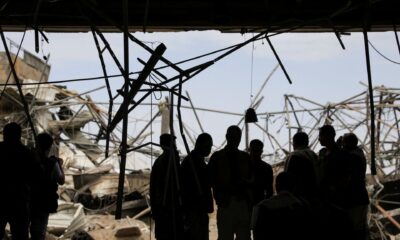
 Middle East2 days ago
Middle East2 days agoThe Take: What does Israel’s escalation with the Houthis mean for Yemen? | Houthis News
-

 Conflict Zones2 days ago
Conflict Zones2 days ago‘Don’t want war’: Kashmiri towns caught in deadly India-Pakistan crossfire | India-Pakistan Tensions
-

 Conflict Zones1 day ago
Conflict Zones1 day agoHave India and Pakistan started a drone war? | Drone Strikes News
-

 Lifestyle1 day ago
Lifestyle1 day ago‘Long Way Home’ has Ewan McGregor and Charley Boorman riding in Europe
-

 Middle East1 day ago
Middle East1 day agoUN experts warn of ‘annihilation’ as Gaza deaths mount | Gaza News
-
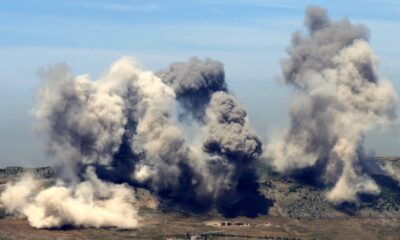
 Middle East1 day ago
Middle East1 day agoOne killed, eight wounded as Israel hits Lebanon in major post-truce attack | Israel attacks Lebanon News
-

 Education1 day ago
Education1 day agoThe best and brightest young scientists are looking beyond the U.S. as cuts hit home



